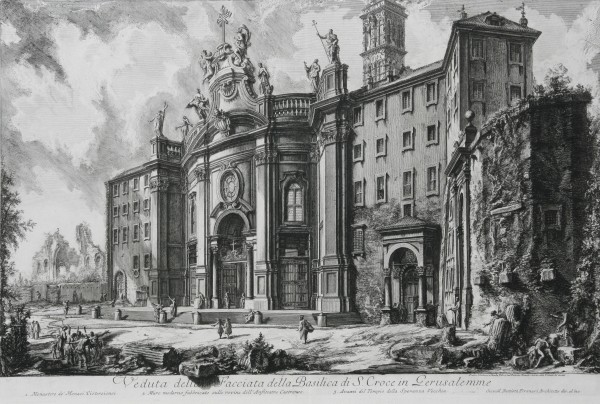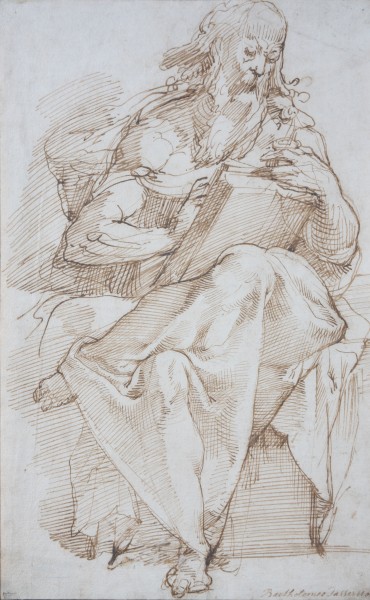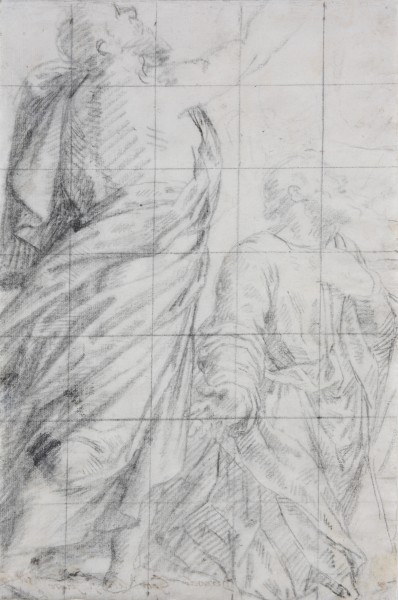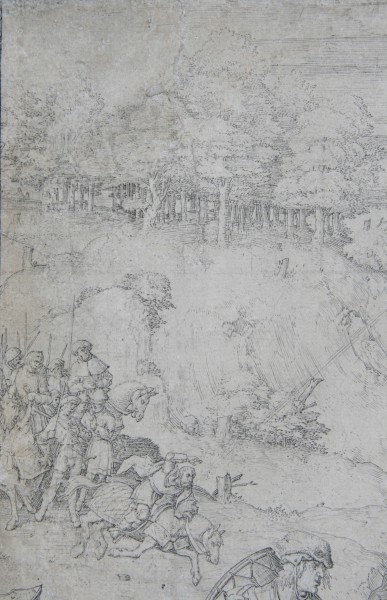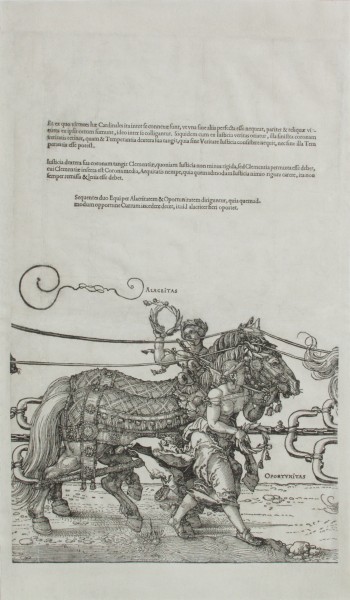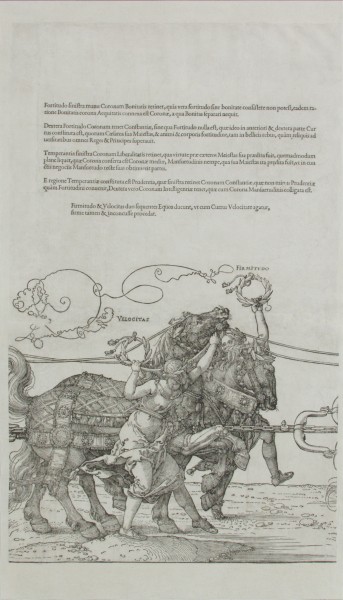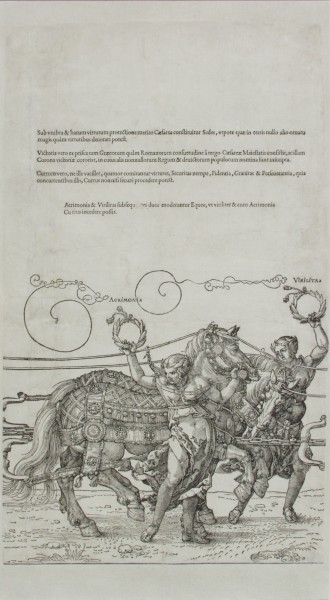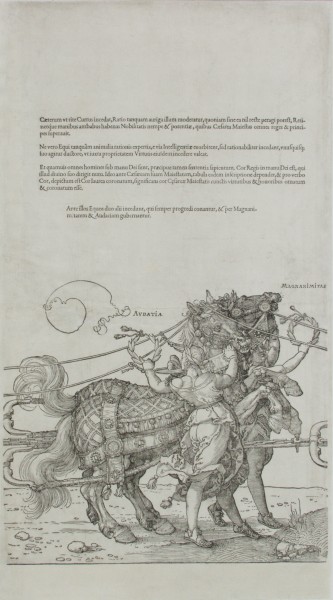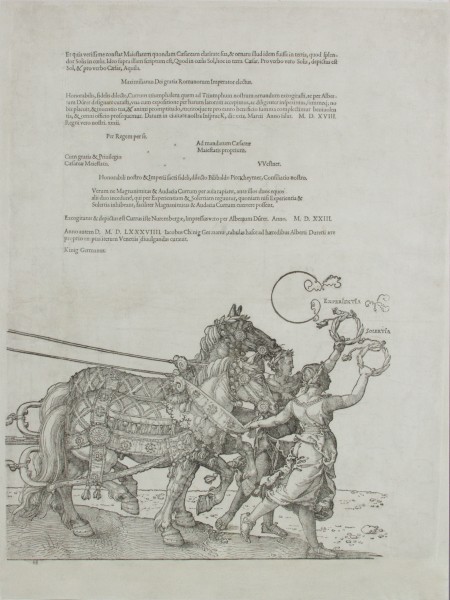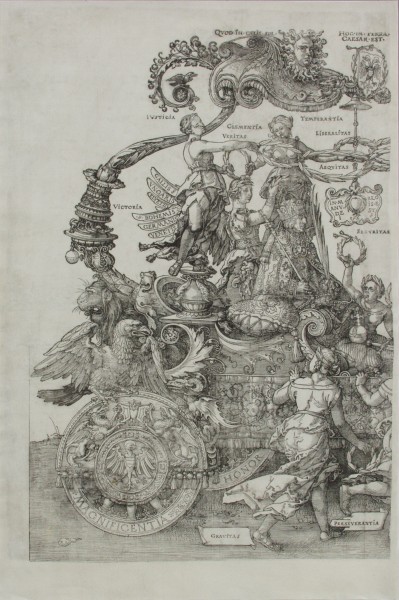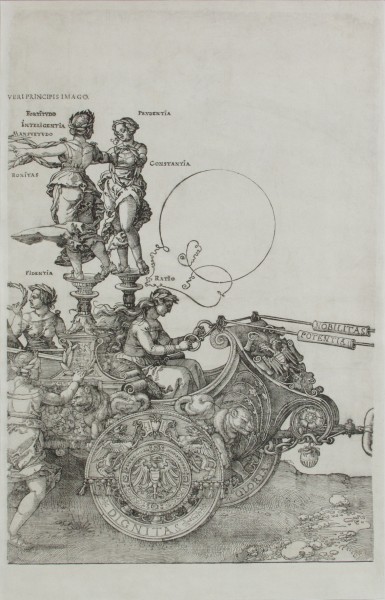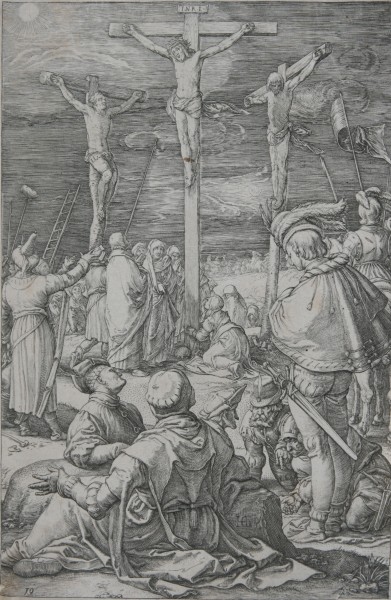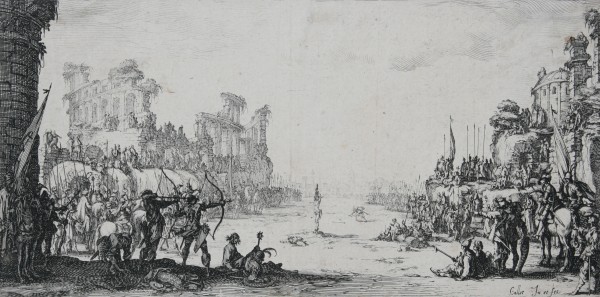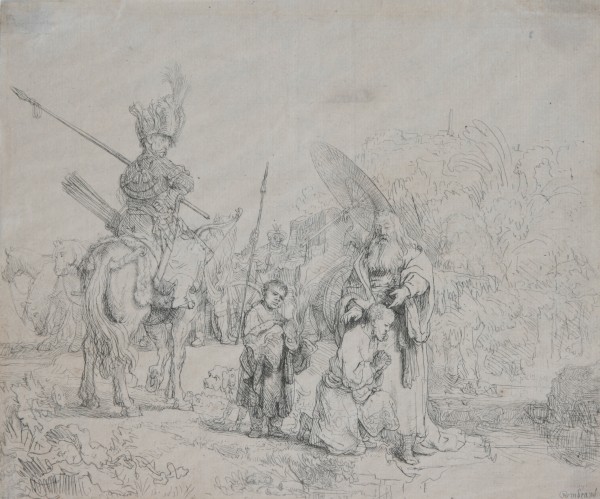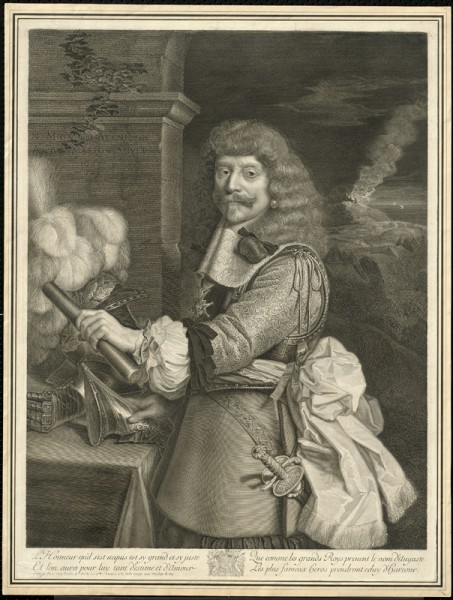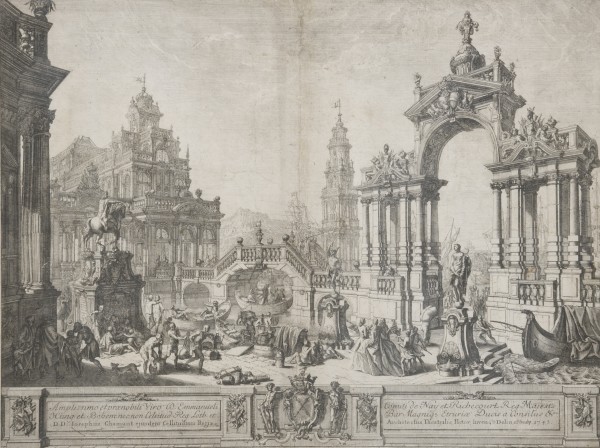The Collection of Old European Graphic Art contains around 3,500 works. The compilation of approximately 500 sheets that the SNG acquired through transfers from the former Slovak Museum in Bratislava in 1950 and 1951 became its foundation. Since then, it has been systematically built through acquisitions from private owners, antique shops and antiquarian bookshops. Thus, this relatively extensive collection contains works from significant circles and the schools of German, Dutch, Flemish, French, Italian and English graphic art from the end of the 15th century up to the 19th century.
The graphic art of the German areas is represented by a relatively extensive set which features the most significant figures of several periods, starting with the extensive German woodcut collection. The oldest period is represented by the works from the cycles by Albrecht Dürer and artists of the Nuremberg and the Augsburg circles, including the masters of small formats (such as Hopfer, Burgkmair, Penz). The works of artists from the period of Mannerism and Baroque such as Merian, von Sandrart, Roos, Rugendas, Vogel and Ridinger represent a similarly wide scale of motifs from sacral to worldly histories, allegories, genres and portraits, enriched by landscape compositions, veduttas up to animal motifs and hunting themes. Rentz, active in the Czech lands, Kleiner, the veduttist and Hollar, a native of the Czech lands who later settled in London, can be classified as Central European artists of a similar formal nature.
Great figures, such as van Leyden, Heemskerck, de Vos as well as the virtuoso of Mannerism, Goltzius, with larger set of copper engravings, and de Gheyn, Visscher and the members of large graphic family of the Sadelers, are also represented in the collection of Dutch and Flemish graphic art. Baroque portrait art is represented by the works of van Dyck, particularly in the production of the excellent reproduction graphic artist, Vorsterman. The Dutch part of the collection contains a balanced selection of all sectors of graphic art from portraits, biblical and genre scenes, allegoriies up to landscapes created by artists such as van de Velde, Swanevelt, Rembrandt, van Ostade and Luyken.
Callot, a native of Lorraine, is extensively represented in the collection of French graphic art, which also includes the works of the well known reproductive graphic school of such artists as Nanteuil, Edelinck, Masson, and Cars. On the contrary, we can again find several famous artists in the Italian part of the collection who graphically adapted their own designs. This excellent line of graphic art includes the works of della Bella, Testa, Maratta, and last but not least, Piranesi, the prolific veduttist of Roma.
Less than twenty works that the SNG acquired through administrative transfer from the Slovak National Museum became the foundation of the collection of European drawing of the 16th – 18th centuries. Through regular purchases from the 1950s until the end of the 1980s, the gallery’s collection grew to almost 250 drawings. Works of Italian masters from the Bologna, Roma and Venice schools particularly prevail. French, German, Dutch and non specified central European artists are represented more modestly. The most numerous are the monuments from the 17th and 18th centuries which also represent the collection’s best works.
From 2006 to 2010, a set of 20 drawings of Italian origin was restored and subsequently presented in a separate exhibition (Sketch – Design – Copy: Restored Italian Drawings from the 16th and 17th Centuries from the SNG Collection, 2010). We intend to continue in restoring and gradually providing access to works from this collection in order to create a graphic department as a place of gradual access to selected works in intimate exhibitions.
Recently we were also successful in participating in large projects of the gallery and the works of this collection enriched the following exhibitions: Stories of the New Testament. Iconography (2000–2001), Figures and Stories of the Old Testament. Iconography (2006), The Flying Dutchmen. Masterpieces of Dutch Art in Slovakia (2006–2007) and the recent project, History of Slovak Fine Art – the Renaissance (2009). The selection of the most significant works of graphic art was also represented at the exhibition dedicated to the 60th anniversary of the founding of the SNG and in the publication for this exhibition (111 Works from the Collections, 2008). In addition, drawing and graphic art have been presented in separate exhibitions, such as the exhibition, Upside Down (K. Škréta, M. Küssel, Pictures of Jesuit Martyrs), 2003 and recently, Architecture in Graphic Art of the 16th – 18th Centuries (Chateau Strážky 2009 – 2010) and The Golden Age of Dutch Graphic Art. From Goltzius to Rembrandt (2010 – 2011) which followed after a longer break that occurred after the large exhibition at the beginning of the 1990s (Dutch, Flemish, Holland Graphic Art of the 16th and 17th Centuries from the SNG Collections, 1992 and Italian Graphic Art of the 16th – 18th Centuries from the SNG Collections, 1993).
Curator of The Collection of Old European Graphic Art: Martin Čičo

